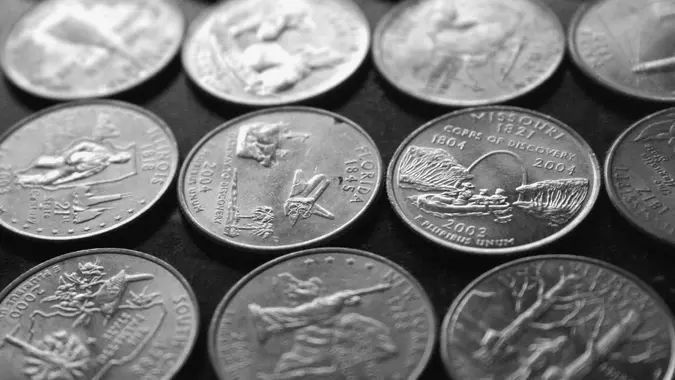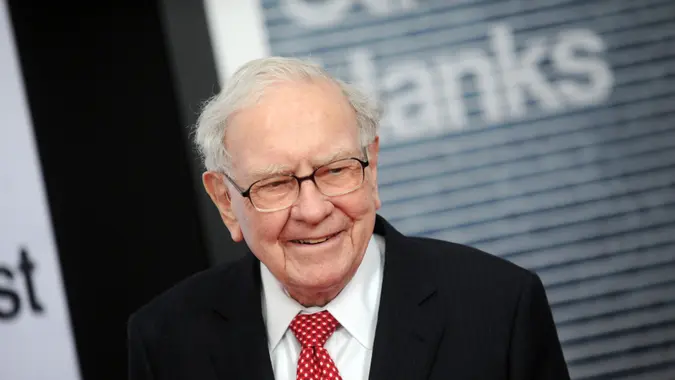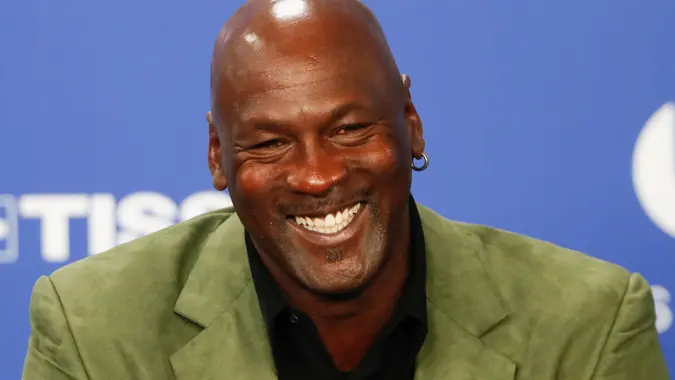Robert Kiyosaki: This is How Investing Differs Between the Rich vs. Poor

Commitment to Our Readers
GOBankingRates' editorial team is committed to bringing you unbiased reviews and information. We use data-driven methodologies to evaluate financial products and services - our reviews and ratings are not influenced by advertisers. You can read more about our editorial guidelines and our products and services review methodology.

20 Years
Helping You Live Richer

Reviewed
by Experts

Trusted by
Millions of Readers
Robert Kiyosaki, author of the personal finance classic Rich Dad Poor Dad, understands first-hand the contrasting mindsets of the wealthy and everyone else when it comes to investing time and money. As a young man, he had two father figures that exemplified the distinction — his own “poor dad” who worked tirelessly at a corporate job, and his best friend’s entrepreneurial “rich dad.”
Here’s how Kiyosaki says investing differs between the rich and the poor.
The Poor Invest Their Limited Time for Money
According to Kiyosaki, the fundamental difference lies in what the rich and poor choose to invest their limited time in. Despite the obvious limitations, the poor see trading their finite hours for money at a job as the path to wealth.
“If you ask most people why they’re working so hard, they’ll tell you it’s for money,” Kiyosaki’s personal finance team explained. “By this, they mean a steady paycheck that provides security…The problem with this approach is that you only make money as long as you work.”
Overworking for a Paycheck Doesn’t Lead to Assets
Unfortunately, data shows that overworking doesn’t translate to higher earnings or wealth accumulation. Average annual hours worked have increased, but real wage growth has stagnated. And 72% of Americans didn’t use half of their paid time off last year, perpetuating the cycle of burnout without asset growth.
The Rich Invest Time Acquiring Income-Producing Assets
On the other hand, the rich take a fundamentally different approach centered around acquiring income-producing assets that can compound wealth with minimal work required.
“If you ask most rich people what they work for, they’ll tell you it’s for assets,” wrote Kiyosaki’s personal finance team. “By this they mean investments and businesses that provide steady cash flow each month with little-to-no work.”
Investing in Financial Education Pays Dividends
While the rich initially put in work to acquire those assets, they prioritize investing time in financial education, which allows them to make savvier investments with higher returns on their time investment.
As Kiyosaki recounts his “rich dad’s” philosophy, “He didn’t put that time into a job; instead, he invested it in his financial future.”
The end result? “Today, he makes millions of dollars a year in passive income — money that works for him instead of the other way around,” wrote Kiyosaki’s personal finance team.
By reframing one’s motivation from chasing a paycheck to building an asset portfolio through financial literacy, the rich can escape cyclical overworking in favor of creating self-sustaining wealth engines. It’s a paradigm shift, but one that the rich evidently understand and leverage to great effect.
 Written by
Written by  Edited by
Edited by 

























